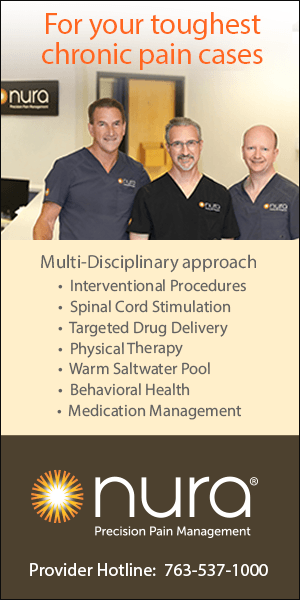ost primary care physicians have adolescent patients and most recognize there are unique issues in treating them. As trusted sources of information, physicians can play important roles in helping young people make good choices and develop healthy behaviors. In so doing, how something is said to a young person is often just as important as what is said.
cover story TWO
Talking to Adolescent Patients
A new toolkit to improve communication
By Katie Pierson, MA, Renee Sieving, PhD, RN, and Christopher Mehus, PhD, LMFT
The University of Minnesota’s Healthy Youth Development – Prevention Research Center (HYD-PRC) has a 28-year history of developing, evaluating, disseminating and applying evidence-based best practices in Healthy Youth Development. The center is housed in the UMN Medical School’s Division of General Pediatrics and Adolescent Health.
Our research is expanding the evidence and understanding of adolescent health and the lived experiences of diverse groups of young people. Focus areas include topics such as teen pregnancy and sexually transmitted disease prevention and sexual health promotion; health equity and restorative justice; marginalized populations such as LGBTQ and homeless youth and children with incarcerated parents; and settings like clinics, schools, youth-serving community organizations, and prisons/jails.
The HYD-PRC’s interdisciplinary team shares these innovations and promotes best practices and policies by partnering with youth-serving adults in clinic settings, government agencies, nonprofits, schools and community organizations. The HYD-PRC’s community-partnered work takes the form of program planning and evaluation, workforce development through subject-matter training, technical assistance and advising, and building community support and system improvement. Its adolescent health workforce development offerings reach nearly 2,000 public health professionals, health care clinicians and students, community agency staff and individuals each year.
Lecturing teens on any topic is rarely effective.
The TALK Toolkit for Adolescent Care
A recent important development in this area, assisted with funding from the CDC, is the TALK Toolkit. It is designed to support primary care clinicians in communicating effectively and providing high-quality preventive care to adolescents on a range of psychosocial and sexual health topics.
Implemented and tested in primary care clinics in greater Minnesota, TALK builds on the HYD-PRC’s 2017-2019 CASH study, which revealed that many teens and their parents want to talk to primary care clinicians about psychosocial and sexual health topics but lack the opportunity. The research also found a gap between generic advice clinicians give to parents (e.g., “Make sure you talk with teens about sex”) and specific recommendations for how to start these conversations. The CASH study also validated that how something is said to a young person is often just as important as what is said: lecturing teens on any topic is rarely effective.
To meet these identified needs, TALK includes three components to help primary care clinicians engage in supportive, productive health conversations with young people and their family members:
- It trains clinicians in a straight-forward support and guide communication framework.
- It provides a set of one-page conversation guides (TALK Tools) on a variety of adolescent psychosocial and sexual health topics such as vaping and marijuana use; bullying; healthy relationships; mental health; sleep; sexual orientation; and screen time.
- It supports clinic-level changes (i.e., adjustments to patient flow, sending pre-appointment “welcome to adolescent care letters” to adolescents and parents) that help clinicians introduce time alone with the patient as their health care setting’s standard of practice.
The HYD-PRC tested the effectiveness of TALK as a clinic-based intervention to increase the delivery of high-quality adolescent care in partnership with four health care systems. Though this pilot study needs to be repeated on a larger scale to demonstrate broad efficacy, TALK shows promise as a program that is user-friendly for busy clinicians, feasible to implement and effective in improving the quality of adolescent preventive visits.
How it Works
The program’s free one-page TALK tools are practical conversation starters on 14 important topics that impact adolescent health. These printable PDFs are user-friendly resources grounded in scientific research and best practices. HYD-PRC researchers worked closely with primary care clinicians, parents and adolescents to make sure that the tone and content reflect the realities of the individuals who implement and benefit from these tools.
Two brief videos on the website introduce clinicians to the resources. “What is TALK?” shows that the manner in which clinicians approach teens about potentially sensitive health topics is just as important as the science behind these conversation. “Using Talk Tools” shows how clinicians can use TALK tools and strategies to facilitate supportive conversations with teens and parents about potentially sensitive topics.
Each of the TALK tools follows a standard format, divided into Fast Facts; Teens: Let’s Talk; Parents: Keep Talking; and Resources. For example, “Fast Facts” on the Healthy Relationships TALK Tool offers the following normalizing information about adolescent romantic relationships:
- It’s normal to start exploring romantic relationships or start to date between ages 11-14. It’s also normal not to.
- One in 10 teens experiences violence in a relationship. This is not okay.
- A key ingredient in healthy sexual relationships at all ages is consent. Whether you’re holding hands, kissing, touching, having sex, or anything else, it’s important for partners to feel emotionally and physically comfortable.
The Teens: Let’s Talk section provides conversation starters for clinicians to use with their adolescent patients. On the same Healthy Relationships TALK Tool, these are:
- Which relationship characteristics (listed above) are most important to you?
- Do you have these things in your close relationships?
- Have you thought about your boundaries for physical touch?
- We can talk about setting and communicating about boundaries if that is helpful.
- If your boundaries have been crossed we can find supportive resources.
- What questions do you have about relationships?
- What information might be useful to you? We can look at the resources at the bottom of this page together to see what’s there.
“The TALK Tools were extremely helpful in getting teens to discuss topics they may have never felt comfortable discussing previously,” said one clinician.
Parental Engagement
The third section of each TALK Tool, Parents: Keep Talking, provides conversation starters for parents, to facilitate ongoing communication with their adolescents on important health topics. On the Healthy Relationships TALK Tool, these include:
- As a parent, your words and actions can help your teen form healthy relationships now and in adulthood. Keep talking about relationships. Say, “You deserve to be treated with respect. Trust your instincts.”
- Ask, “Do you see examples of healthy relationships among your friends? Any unhealthy ones? What do you notice?”
- Make a plan. Say, “If you ever feel unsafe or uncomfortable, text me [or another trusted adult]. I won’t ask you anything until the next day and I won’t try to make you tell me anything. I just want you to be safe.” Ask, “Where will you be? Who will be there? When will you be home?”
Normalizing Time Alone
While clinical guidelines from major medical associations recommend that adolescents have regular preventive visits that include time alone with their primary care clinician, only around 50% of U.S. teens report having had such time alone.
Interviews with parents have revealed that parents are generally comfortable with their teen having time alone if it is described developmentally (e.g., it is part of adolescents’ learning to take responsibility for their own health care) and if it is clear that time alone is a standard practice for all adolescents. Interviews with adolescents have made clear that they are comfortable with time alone but want an opt-out introduction to time alone (e.g., “Now I’ll have your parent step out, are you okay with that?”) not an opt-in (e.g., “Do you want your parent to leave the room?”).
In response to these stated needs, TALK offers clinicians a simple script for introducing time alone: “It’s great to see you both. Today, we will start by talking all together, then, [to the adolescent], as with all visits with patients your age, we will have a little time to talk one-on-one, and then we’ll invite your parent back in to wrap up together. [Adolescent], are you comfortable with that plan?”
One in 10 teens experiences violence in a relationship.
Engaging Parents as Partners
Parents play an important role in helping adolescents take increasing responsibility for their care, so that they have the skills and experience to be effective health care consumers as they reach young adulthood. TALK also offers clinicians template language for a pre-visit letter home to parents about the ways they can help their teen take gradual responsibility for his or her health care. These considerations include:
- Prepare your teen for their upcoming visit. Give them a heads-up that you will be stepping out of the room and encourage them to think about what they would like to discuss with their clinician during that time. Suggest questions they might want to ask during that time.
- Be supportive. When your teen’s clinician asks you to step out of the room, you can signal that you appreciate them taking the time to speak with your teen alone. Being supportive can reassure your teen and empower them to take greater responsibility for their own health care.
- Invite questions after your teen’s visit. Asking “What questions do you have from your appointment?” and “Is there anything that came up during your appointment that would be useful to talk about with me?” may open the door to continued conversations about your teen’s health and health care.
- Talk with your teen. Have regular conversations about health-related topics including healthy relationships, mental health, substance use and preventing pregnancy and sexually transmitted infections. For example: “What’s going well for you right now?” or “What do people at school say about vaping?” are examples of open-ended questions you can use for many different topics.
TALK’s corollary language for a pre-visit letter home to adolescent patients invites young people to put themselves in charge of their own health care. Important points include:
- We are writing to tell you more about being a patient at our clinic during your adolescent years. We can help you navigate the many changes, choices and decisions you’ll have during this time.
- During your upcoming visits, you can expect that we will first talk with your parent and you together. Then, your healthcare clinician will ask your parent to step out of the room to give you a chance to talk with your clinician individually. During this time, you’ll have a chance to ask your clinician about anything that is on your mind about home, school, friends, relationships or your health. This time alone is a standard part of a teen visit and does not mean there is anything wrong. If you would rather not have time alone, please feel free to tell your clinician.
- Though teens often feel comfortable talking to their parents or other supportive adults, there are some times when you may want to discuss things in private with your health care clinician. As a young person, you can talk to us about mental health, sexual health and substance use on your own. Everything you talk about during time alone will be just between your health care clinician and you, unless you say you’re going to hurt yourself, someone is hurting you or you’re going to hurt someone else. If your clinician ever felt the need to share information you told us with someone else, we would tell you first.
- In our clinic, the adolescent health care team includes your health care clinician, your parent or other caring adult and you. Parents are often happy to see their teens start to take charge of their own health care. Before your next visit, we encourage you to talk to your parents about the visit including how you want them to help you get ready for your appointment.
Training for Clinicians and Clinic Teams
Formal TALK training opportunities with the HYD-PRC team give health care clinicians opportunities to practice new skills with adaptable scripts (one-page TALK tools) and examples for immediate use. Formats range from one-hour lunch and learns to multisession workshops. The multisession format builds clinicians’ motivational interviewing skills and offers opportunities to apply them. It provides additional language and clinic-level practices for standardizing teens’ time alone with their primary care clinician. Trainings can include sessions covering combinations of key features of high-quality adolescent health such as:
- Balancing adolescent confidentiality and parent engagement
- Effective introduction of time alone
- Addressing adolescent mental health
- Talking about substance use
- Engaging in conversations about healthy relationships
- Conversations about sexual decision making and contraception
- Sexual orientation & gender identity
A participating physician said, “After completing the training, I saw a patient who disclosed some risky behaviors. I used some of the phrases I’d learned, allowing the patient to open up and share more with me.”
In conclusion
Effective communication can improve adolescents’ personal agency related to their health and health care, their satisfaction with the care they receive, their adherence to treatment recommendations and their decisions to seek future health care. We’re excited to make these resources widely available to clinicians doing the important work of supporting adolescents’ psycho-social and sexual health. We welcome feedback from Minnesota physicians on their own experiences with TALK.
Free TALK Tools, clinician testimonials and more information about training offerings are on the TALK website at https://z.umn.edu/talk_toolkit.
Katie Pierson, MA, is a communications strategist and writer for the Division of General Pediatrics and Adolescent Health in the Department of Pediatrics in the University of Minnesota Medical School.
Renee Sieving, PhD, RN, is a professor with the University of Minnesota School of Nursing and the Department of Pediatrics, director of the Leadership Education in Adolescent Health fellowship program, and the Pauline A. Vincent Chair in Public Health Nursing.
MORE STORIES IN THIS ISSUE
cover story one
Health Care at the Crossroads: Securing the future of patient care
By Lisa Schweiger, MD, and Nick VanOsdel, MD
cover story two
Talking to Adolescent Patients: A new toolkit to improve communication


















